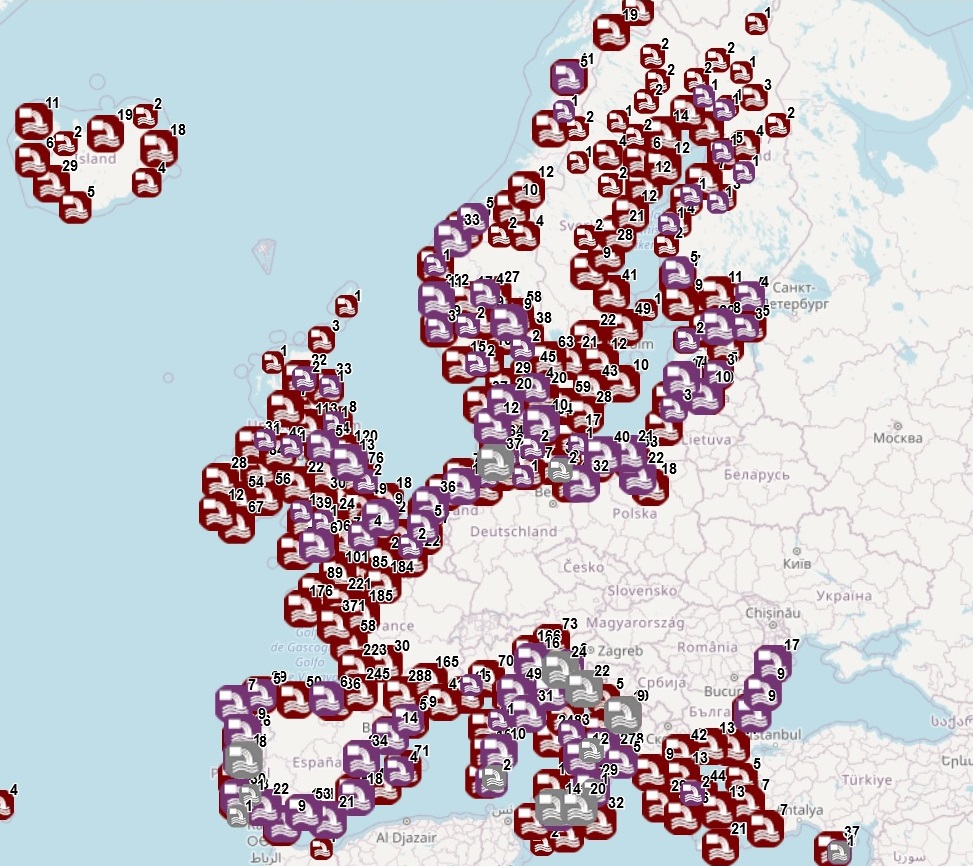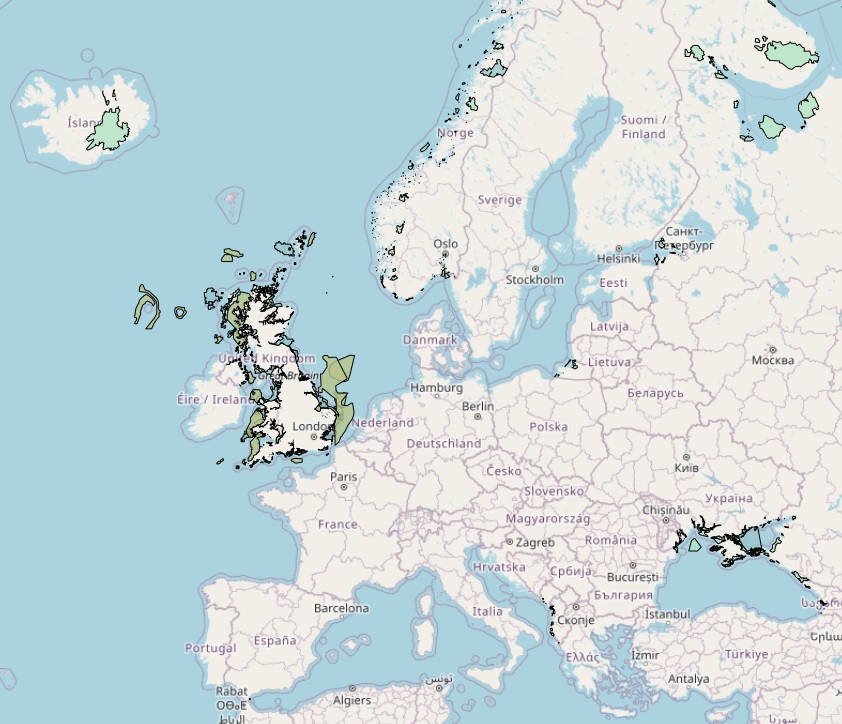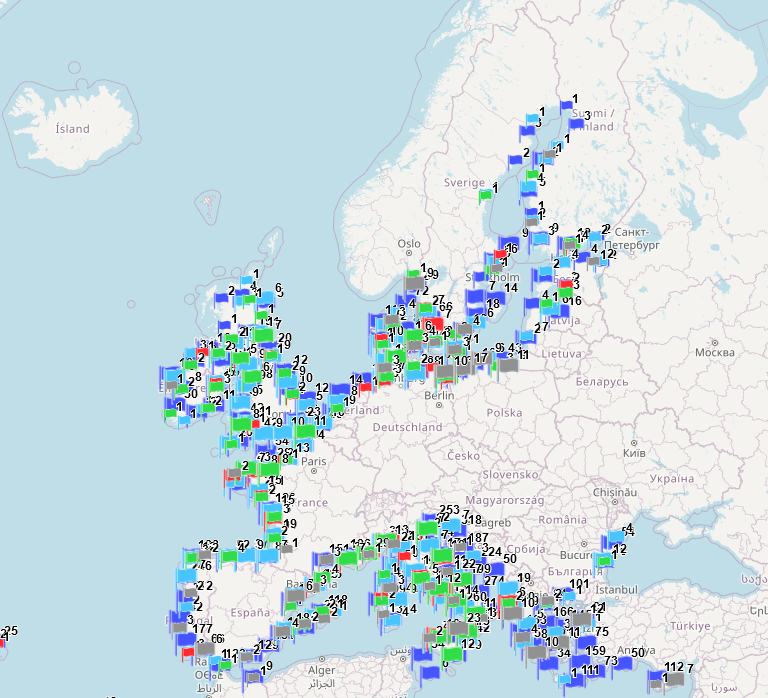European Environment Agency (EEA)
Type of resources
Available actions
Topics
Keywords
Contact for the resource
Provided by
Years
Formats
Representation types
Scale 1:
-

The dataset on coastal discharge points from Urban Waste Water Treatment Plant (UWWTP) was created in 2019 by AZTI for the European Marine Observation and Data Network (EMODnet). It is based on the dataset "Waterbase-UWWTD" (Urban Waste Water Treatment Directive – reported data) provided by the European Topic Centre on Inland, Coastal and Marine waters, and made available at https://www.eea.europa.eu/data-and-maps/data/waterbase-uwwtd-urban-waste-water-treatment-directive-8. The dataset is available for viewing and download on EMODnet web portal (Human Activities, https://emodnet.ec.europa.eu/en/human-activities) and it presents the available information (location of discharge points, link to specific treatment plant, type of receiving area into which the effluent/wastewater is discharged, related waterbody/river basin) on individual points of discharge from treatment plants or collecting systems located in coastal NUTS3 regions, based on data selected from the reporting of Member States as part of the UWWTD implementation. The geographic coverage is: Belgium, Bulgaria, Croatia, Cyprus, Denmark, Estonia, Finland, France, Germany, Greece, Iceland, Ireland, Italy, Latvia, Lithuania, Malta, Netherlands, Norway, Poland, Portugal, Romania, Slovenia, Spain, Sweden, United Kingdom. The description of all attribute fields of UWWTP is given in the Waterbase-UWWTD (https://www.eea.europa.eu/data-and-maps/data/waterbase-uwwtd-urban-waste-water-treatment-directive-8/waterbase-uwwtd). In this update, data provided by several countries during 2022 (Waterbase reported under UWWTD data call 2021; version 10 publised 15 January 2023) are included.
-

The dataset on Emerald Network sites was created in 2023 by Cogea for the European Marine Observation and Data Network. It is entirely based on spatial data from the European Environmental Agency (EEA), plus additional infos and selected EEA tabular data added as feature attributes. It is available for viewing and download on EMODnet web portal (Human Activities, https://emodnet.ec.europa.eu/en/human-activities). The Emerald Network is an ecological network made up of Areas of Special Conservation Interest designated under Recommendation No. 16 (1989) and Resolution No. 3 (1996) of the Standing Committee to the Bern Convention. The objective of the Emerald Network is the long-term survival of the species and habitats. The Network involves all the European Union member States (the European Union contributes to the Emerald Network with its Natura 2000 sites), some non-Community States and a number of African States. The dataset cover the following countries: Albania, Andorra, Armenia, Azerbaijan, Belarus, Bosnia and Herzegovina, Georgia, Iceland, Liechtenstein, Moldova, Montenegro, North Macedonia, Norway, Russian Federation (European part), Serbia, Switzerland, Ukraine and the United Kingdom. In the webmap the dataset has been filtered in order to show only marine and coastal sites. Where available each polygon has the following attributes: site code, site name, country code, country name, site type/description (A: SPA, Special Protection Areas - sites designated under the Birds Directive; B: SCIs and SACs, Sites of Community Importance and Special Areas of Conservation - sites designated under the Habitats Directive; C: where SPAs and SCIs/SACs boundaries are identical, sites are designated under both directives), site status (Proposed, Candidate or Adopted), compilation date, update date, area (ha), marine area percentage, marine/coastal location (1). For further information (e.g. biogeographic region, designation status, sites, habitats, impact, management, species and metadata) please visit the EEA's website hosting the Emerald tabular data (https://www.eea.europa.eu/data-and-maps/data/emerald-network-data-1/emerald-tabular-data). This version covers the reporting in 2021.
-

The dataset on the status of bathing waters in the European seas was created in 2015 by Cogea for the European Marine Observation and Data Network (EMODnet). It is based on data from (i) the 'Bathing Water Directive - Status of bathing water, 2022' provided by The European Topic Centre on Water and made available by the European Environment Agency (EEA) for the EU countries, Albania and Switzerland, (ii) the Department for Environment Food and Rural Affairs of the Environment Agency for the England, (iii) the Gibraltar Environmental Agency, (iv) the Department of Agriculture, Environment, and Rural Affairs for the Northern Ireland, (v) the Scottish Environment Protection Agency for the Scotland, (vi) the Natural Resources Wales Government Sponsored Body. It is available for viewing and download on EMODnet web portal (Human Activities, https://emodnet.ec.europa.eu/en/human-activities). The EU Bathing Water Directive requires Member States to identify popular bathing places in fresh and coastal waters and monitor them for indicators of microbiological pollution (and other substances) throughout the bathing season which runs from May to September. More information are available at https://rod.eionet.europa.eu/obligations/787. The dataset presents information on bathing water identifier and name, county code and name, latitude and longitude of sites, specialized zone type (coastal, lake, river, transitional), link to the national sources website, bathing water quality status (0 - Not classified, 1 - Excellent, 2 - Good, 3 - Good or Sufficient, 3 - Sufficient, 4 - Poor, Closed, Insufficiently Sampled), year (1990-2022, where avialable). Only coastal and transitional bathing waters are shown on the viewer, while the dataset also contains lake and river ones. Geographic coverage: Albania, Austria, Belgium, Bulgaria, Croatia, Cyprus, Czech Republic, Denmark, Estonia, Finland, France, Germany, Greece, Hungary, Ireland, Italy, Latvia, Lithuania, Luxembourg, Malta, Netherlands, Poland, Portugal, Romania, Slovakia, Slovenia, Spain, Sweden, Switzerland and the United Kingdom (England, Gibraltar, Northern Ireland, Scotland, Wales). Classifications were not made for some of the UK sites for the 2020 season due to the impact of the COVID-19 pandemic on the sampling programme. Compared with the previous version, the dataset has been updated according to the latest version published by the resource providers in the 2023 for the 2022 bathing water season.
 EMODnet Product Catalogue
EMODnet Product Catalogue